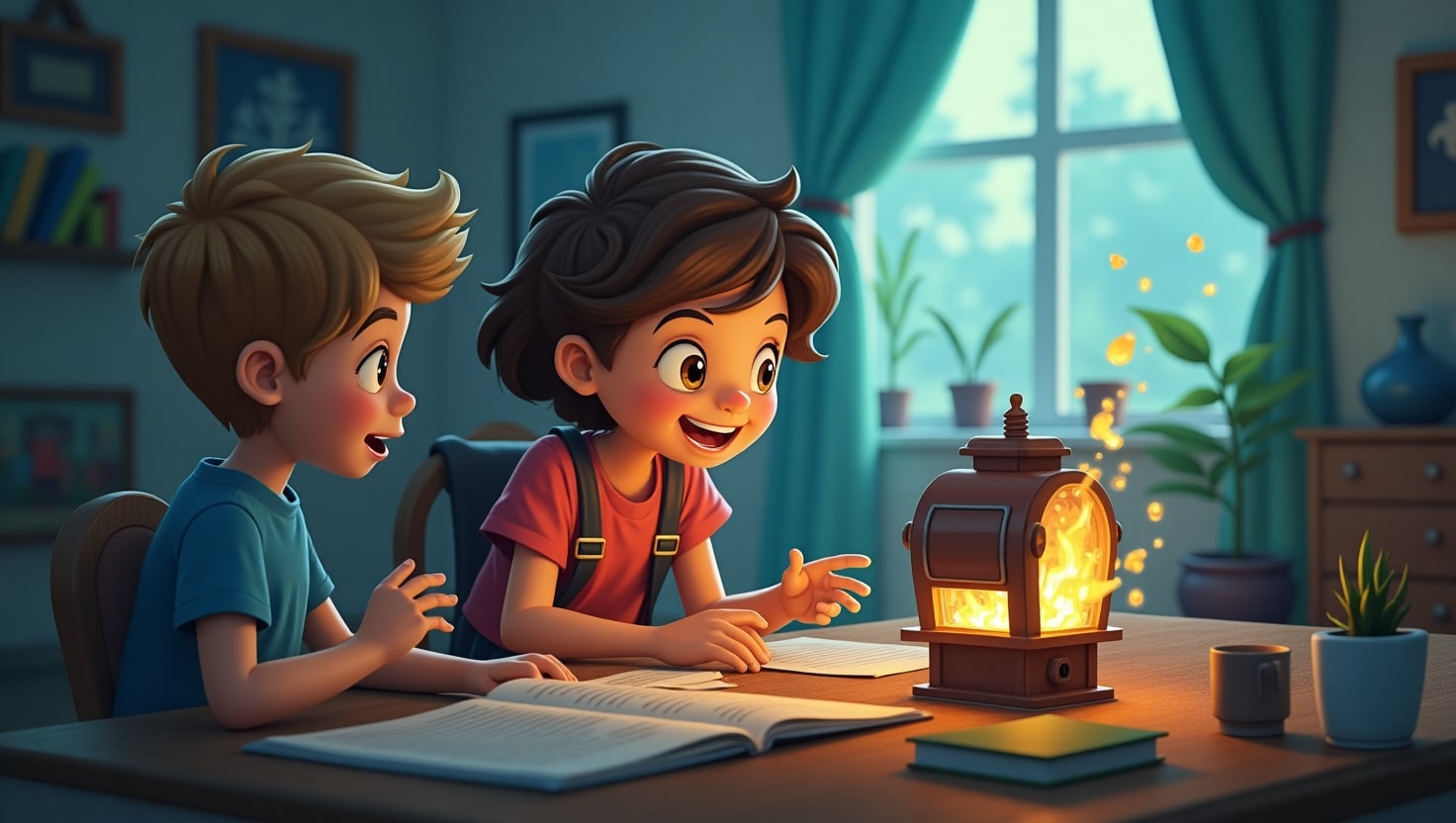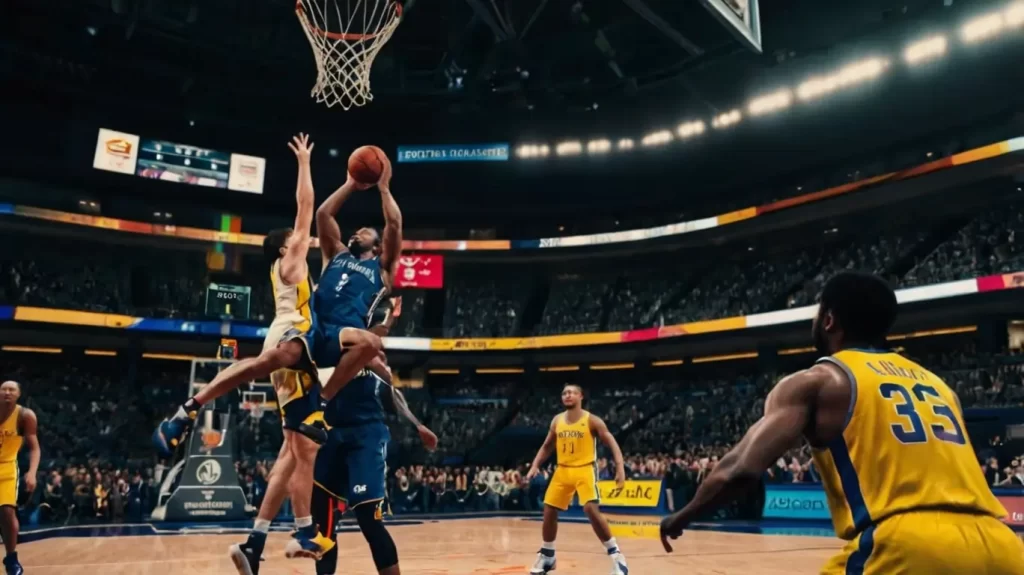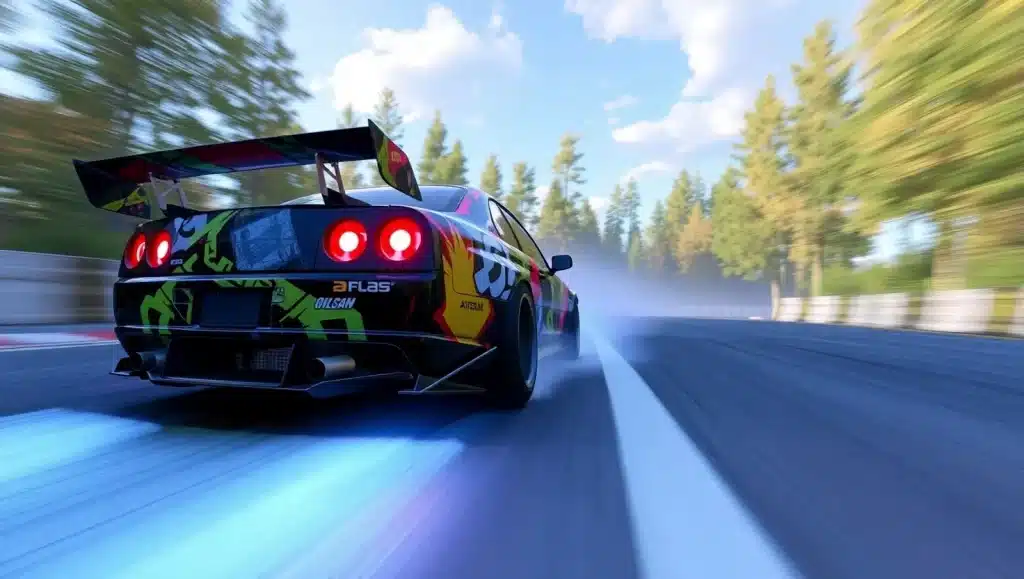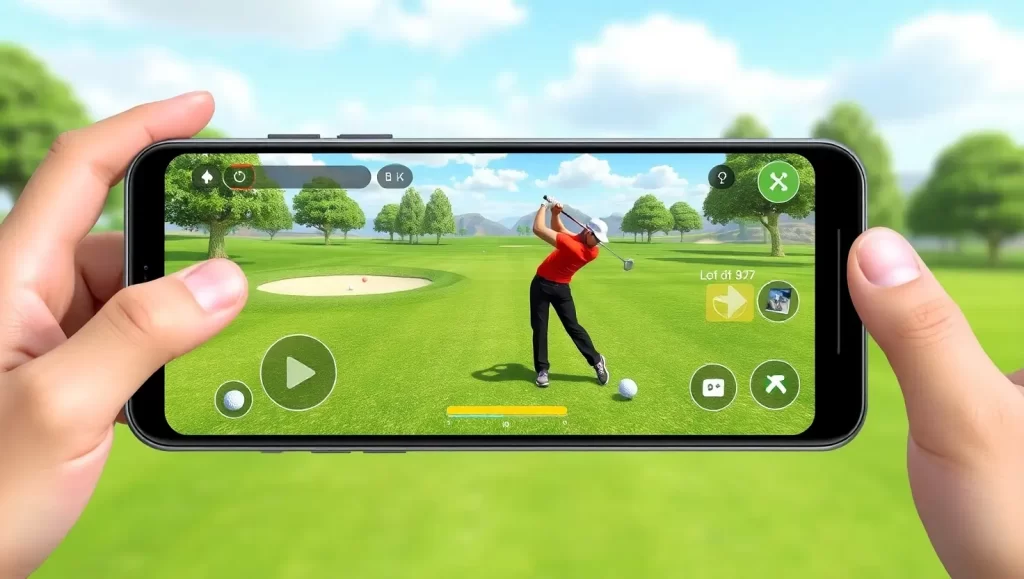Let’s face it—kids love games that make them feel like they’re stepping into another world. Whether they’re exploring vast landscapes, solving intricate puzzles, or engaging in thrilling action sequences, the more realistic the experience, the better. But what exactly makes a game “realistic” for kids? It’s not just about lifelike graphics or sophisticated mechanics. It’s a combination of seamless gameplay, immersive environments, and believable characters that allow players to lose themselves in the experience.
In this article, we’ll dive into some of the most realistic video games for kids—not just in terms of visuals, but also how gameplay mechanics, sound design, and even storytelling come together to create an unforgettable experience. These games go beyond flashy graphics, offering kids a truly immersive experience where they can learn, explore, and grow.
What Makes a Game Realistic? The Key Components
– Graphics: Advanced technologies like ray tracing, 4K textures, and hyper-realistic animations help create lifelike environments and characters.
– Gameplay: Physics-based mechanics, dynamic weather, and AI behavior all contribute to a game that feels real. Imagine being able to interact with objects in the environment as you would in real life.
– Immersion: Sound design, environmental storytelling, and meaningful player choices make the game world feel lived in while ensuring players feel truly involved.
The Evolution of Realism in Gaming
From the days of pixelated graphics and 8-bit adventures, gaming has come a long way. The shift to photorealistic visuals has been propelled by advancements in AI, ray tracing, and next-gen consoles. Today, gaming worlds are not just beautiful—they’re alive, with NPCs reacting dynamically to player actions. The future of realism seems even more exciting, with the advent of virtual reality (VR), augmented reality (AR), and AI-driven NPCs, offering unprecedented immersion and interaction.
Our List of the Most Realistic Video Games for Kids
1. Lego City Undercover
- Open-World LEGO Adventure.
- Variety of Gameplay.
- Disguise System.
If you’re looking for a game that’s fun yet realistic enough for younger players, Lego City Undercover is a great choice. The game offers a vibrant open world, set in the bustling Lego City, where kids take on the role of Chase McCain, a cop tasked with capturing criminals. While the graphics have a cartoony edge, the world itself feels alive. Vehicles, pedestrians, and environmental interactions give the city authenticity, and the AI behavior of characters feels more natural with each passing mission. The gameplay combines action, puzzle-solving, and even some platforming, offering a balance of realism and fun.
It’s like a perfect blend of real-world mechanics wrapped in the joyful, playful charm of Lego. As you engage in high-speed chases, climb buildings, and solve mysteries, you’ll find yourself immersed in a world that feels both tangible and exciting.
2. Minecraft: Education Edition
- Educational Focus.
- Curriculum Alignment.
- Teacher Tools.
Minecraft may seem like just a straightforward sandbox game, but its Education Edition adds a lot of realism that makes it both entertaining and educational. The game features physics-based mechanics, which means things like gravity and water flow are simulated to mimic the real world. Players have the chance to learn about architecture, history, and teamwork by constructing buildings, developing ecosystems, and working together on various projects.
Thanks to its realistic crafting systems and constantly changing environment, Minecraft offers a rich experience where kids can explore and create their worlds. It’s an excellent platform that helps children build critical thinking and problem-solving skills, all while teaching them how to manage resources and think like true engineers.
3. Super Mario Odyssey
- Open-World Exploration.
- Capture Mechanic.
- Vibrant World Design.
The game doesn’t try to look realistic like others, but its way of building new worlds and making things feel real makes it different from most. When Mario travels through entire worlds, everything works in ways we recognize and understand—gravity pulls objects down, weather shows signs of passing storms, and the ground acts like real earth. When Mario gets control of different creatures or objects through his hat Cappy, the game moves perfectly with what he does, making Mario’s actions look incredibly easy and natural.
The game becomes more real thanks to its useful animations that blend well with its colorful backgrounds. Super Mario Odyssey gives children the feeling of talking directly with the game world instead of getting tied down by too many complicated challenges. The game meets players where they are – providing both simple, fun gaming and complex, realistic interactions.
4. Farming Simulator 22
- Realistic Farming Simulation.
- Large Open World.
- Advanced Machinery.
If your child wants to learn how farming works, Farming Simulator 22 shows them both the practical aspects of agriculture and does it surprisingly accurately. You can learn how crops were grown and sold in the game thanks to its realistic farming physics model. The simulation lets you control real farm machines, just like they work in the field. Rainy or sunny days change what grows best in each part of the season and tell you when to harvest crops.
Your child will learn about how nature works while taking care of everyday farming practices in this game. Children learn about how farm work connects to their daily lives through this interactive experience.
5. Animal Crossing: New Horizons
- Relaxing Life Simulator.
- Customizable Island.
- Community Building.
Few games capture the essence of realism like Animal Crossing: New Horizons, where every interaction feels natural. Players design their idyllic island, engage with animal villagers, and manage daily tasks like fishing, bug catching, and gardening. The weather changes, and the time of day shifts, making the world feel alive in a way that’s rare for a game.
In terms of realism, it’s the perfect blend of freedom and routine. There’s something about the way the world reacts to your actions—whether it’s a change in season or a new villager moving in—that draws you in. It’s an escape from reality, but one that feels familiar and deeply immersive.
6. Zelda: Breath of the Wild
- Open World Exploration.
- Freedom to explore in any order.
- Physics-Based Gameplay.
It’s hard to talk about realistic games without mentioning The Legend of Zelda: Breath of the Wild. Doing everything from exploring without limits to using real-world physics to moving through the game’s weather unfolds an immersive experience. Because Link can naturally interact with everything from lighting fires to playing with leaves blown around, the game makes you feel like you’re participating in a living adventure.
The game makers spent lots of time creating realistic behaviors for animals and shaping the world’s landscapes with extreme care, which makes both the magic and reality of the world feel true to life. Every time you visit shrines or climb mountains, you get the feeling that the whole world wants to show you new experiences.
7. Luigi’s Mansion 3
- Ghost Hunting Action.
- Hotel Setting.
- Puzzle-Solving.
What reader can resist this new Luigi’s Mansion 3? This game mixes fun cartoon elements with very real gameplay features. When using Luigi’s vacuum to hunt ghosts and figure out puzzles, the game’s creators paid careful attention to all the details. The mansion’s spooky feeling comes from the player’s three senses, seeing real lighting and shadows, hearing effects, and the game’s ability to fool their sense of touch.
Like a standard scary game, Luigi’s Mansion 3 makes its world feel scary by combining game physics with how the environment reacts to what you and other characters do. Both how ghosts act and what your touch does to stuff around you make this world feel more real and draw you into the game.
8. Forza Horizon 5
- Open World Racing.
- Car collection.
- Freedom to explore the map.
For older kids who have a bit more experience with gaming, Forza Horizon 5 is the ultimate realistic racing game. Set in the stunningly detailed open world of Mexico, the game uses cutting-edge graphics, ray tracing, and dynamic weather systems to create an almost lifelike racing experience. The cars, modeled after real-world vehicles, handle physics-based realism, making the gameplay feel both authentic and exhilarating.
The landscapes, whether you’re speeding through deserts, jungles, or bustling cities, are breathtakingly realistic. Add in the beautiful sound design, from the roar of the engine to the wind rushing by, and you’ve got a truly immersive driving experience that kids can enjoy from the comfort of their homes.
9. Minecraft Dungeons
- Dungeon Crawler.
- Fast-Paced Combat.
- Hack-and-slash combat.
While Minecraft Dungeons doesn’t offer the same sandbox experience as its predecessor, it brings a more story-driven and combat-focused take on the world of Minecraft. The game is packed with stunning visuals and intricate environments that feel like they belong in a larger, more immersive universe. The physics of the game, including the way enemies and objects interact with the environment, adds a layer of realism to the fantastical world.
It’s a great introduction to action RPGs, where kids can enjoy dungeon crawling, fighting enemies, and collecting loot, all within a familiar, yet enhanced world.
10. Rocket League
- Intense and exciting gameplay.
- Easy to learn basic controls.
- Competitive Gameplay.
Who would have thought that soccer and rocket-powered cars would make such a great combination? Rocket League is a wildly fun, yet surprisingly realistic, multiplayer game where kids control cars to play soccer. The physics-based mechanics, such as how the ball bounces, how cars handle, and how boosts affect movement, all create an immersive experience that feels more lifelike than one might expect.
The game’s visual style, while not photorealistic, has a slick and polished look that enhances the sense of realism. The precision required for the gameplay and the realistic physics behind each car’s movements make Rocket League a fast-paced and engaging experience for kids.
11. SimCity BuildIt
- City Building Simulation.
- Resource Management.
- Disaster Management.
For kids who enjoy the process of city-building, SimCity BuildIt offers a highly realistic simulation of managing a metropolis. Players are tasked with creating a city, managing resources, and balancing the needs of the citizens. The way buildings and industries interact, the management of natural disasters, and the economic principles provide a surprisingly deep and educational experience.
The game’s graphics, while stylized, feature detailed animations and environments that bring the city to life. As players expand their city’s infrastructure, they learn valuable lessons about urban planning, economics, and environmental sustainability. It’s an engaging way for kids to understand the complexity of city management while building a world of their own.
11. Planet Zoo
- Realistic Animal Behavior.
- Zoo Management Simulation.
- Zoo Development.
Planet Zoo is a game where kids can unleash their inner conservationist by designing and managing their zoo. The realism comes from its attention to detail regarding animal behavior, environmental needs, and zoo management. Animals behave in believable ways, requiring specific environments and care to thrive.
The graphics are stunning, with lifelike animals that interact with each other and their habitats. As kids design enclosures and manage resources, they learn about biodiversity, animal welfare, and effective problem-solving strategies. The game not only enhances creativity but also instills a sense of responsibility for wildlife conservation.
The Future of Realistic Video Games
As gaming technology continues to evolve, the potential for hyper-realistic simulations grows exponentially. With VR, AR, and AI-driven NPCs on the horizon, games are becoming more immersive than ever. These innovations open doors for interactive storytelling and lifelike simulations that deepen the gaming experience.
Emerging trends suggest that future games will blur the lines between the real world and digital environments, providing experiences that are not only engaging but also educational and transformative.
Final Thoughts
In an ever-evolving digital world, the games we mentioned on ou list provide an unparalleled immersive experience for kids that combines fun, education, and skill development. From exploring sprawling worlds in Zelda: Breath of the Wild to building eco-friendly zoos in Planet Zoo, these games offer not just entertainment but also valuable lessons. As technology progresses, the potential for these games to enrich young minds grows exponentially, promising even more captivating experiences in the future. Whether your child is racing through the streets in Forza Horizon 5 or creating thriving cities in SimCity BuildIt, the gaming world offers endless possibilities for adventure and learning. So, grab a controller and let the journey begin!
1. What age group is best suited for realistic video games?
While realistic games can be suitable for various ages, it’s important to consider the content and mechanics of each game. Many realistic games are designed for older children and teens due to complex gameplay and mature themes. Always check the ESRB rating for age-appropriate guidance.
2. Are there realistic games that promote environmental awareness?
Yes, games like Planet Zoo and SimCity BuildIt offer opportunities to learn about environmental conservation and sustainable resource management. These games encourage players to think critically about the impact of their actions on the environment.
3. Can realistic games help develop problem-solving skills?
Absolutely! Many realistic games, such as Minecraft and Farming Simulator 22, encourage critical thinking and strategic planning. By managing resources, solving puzzles, and making decisions, players can enhance their problem-solving abilities in engaging and interactive ways.













